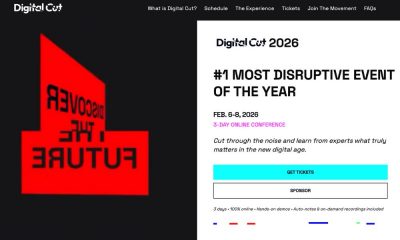Business
Rod Santomassimo of The Massimo Group: 5 Technology Hacks For Small Businesses
Published
6 years agoon
By
Ginny Nguyen
Rod Santomassimo is the founder and president in North America’s largest commercial real estate coaching and consulting firm, The Massimo Group. All business owners constantly evaluate and adapt their offerings to the market, especially to how their audiences are being reached. A major component of this evaluation is technology. Technology cannot replace all businesses, however, it’s still important for it to be implemented.
Although technology is not simple for some business owners, you still need to learn how to leverage the technology you elected to invest in. It can be worth both the time and capital, but it’s also considered a necessity for small business owners. Being a small business owner himself, Rod is constantly looking for better ways of retaining and growing the profit margins. It seems like the more he invests in technology that supports the systems and processes his team creates, the more profitable they become. From creating more efficient processes to reaching targeted prospects, and reducing costs, technology has a major impact on business.

With his excellent coaching skills, he is planning on writing his third book with the chance to share his knowledge. Rod has heavily relied on technology to communicate and orchestrate their services with all of the team members and clients with Infusionsoft. The Massimo Group participates in social media as well, but in order to improve, the group plans on exploring additional technologies to integrate with their current platforms to double in an active client base. To overhaul certain elements in the coaching programs and replace them with more videos and downloadable content, they rely on Vimeo and Kajabi for this.
The Massimo Group would not be as effective with their clients if the tech was not incorporated. The company would have to depend on email verification and consistent systems standardization checks to simply make it through one week for a handful of clients-let alone one year, with hundreds of clients.
Rod then continues to explain why some struggle with this advantage with a number of factors. It starts with ignorance, containing a mentality that is unwilling to adapt is dangerous. Thinking that there shouldn’t be any advances along the way will leave you stranded. Similar to that is fear, fear in the investment and incompetency. Given that, Rod shares his trick in dealing with the rapid technological advancements. “Hire people that are much way smarter than you-ones that you can compensate less than your hourly rate”. He then goes on to describe his employees at The Massimo Group, one being a young girl up in Maine who runs all of their marketing, one in Kentucky for technology, and a kid in Phoenix who helps with your campaigns. All are much younger and smarter in their respective roles, but regardless, they work for Rod Santomassimo.
As someone who’s in the position himself, Rod shares his expertise by advising 5 technology hacks for the small business owner.
Facebook’s ability to get your message directly to your targeted audience is unmatched. Everyone seems to be on Facebook, including Massimo’s target audience being the white-collared professionals between the ages of 35 and 55.
Zoom
Used for all internal conference calls, client calls, and webinars as well. It’s a great video-conference platform, with a chance of it being free for a single account. It is heavily relied on for webinars, some businesses should use this advantage.
Rev.com
We need to have access to transcriptions for internal communications, client communication, and webinar recordings. Even for blogging and book ideas. Rev.com is simple, you can upload your audio file and within 24 hours, it’s in your inbox.
Upwork
Formerly known as elance.com, Elance used to gather 1,000 emails to launch any company’s idea. Now it’s being used for projects such as editing, research, Excel worksheet building, and yes-technology experts.
Audible
Being a small business owner requires constant learning, the struggle here is finding the time. Now, with Audible, everyone can listen to books while doing a task. It has been quoted that Audible even makes others look forward to exercising.
Reporting New Technology, Innovation and Business Trends.

You may like
Business
The CHIPS Act: What It Means for the Semiconductor Industry
Published
18 hours agoon
November 18, 2025
The CHIPS and Science Act was officially signed into law by President Biden on Tuesday. It’s a supposedly a pass to bolster national security, stabilize the economy and support working families. But with naysayers and supporters from both sides of the political aisle emerging by the day, it’s crucial to assess the rationale behind the act.
The CHIPS Act, or (less appetizingly) the Creating Helpful Incentives to Produce Semiconductors Act, contains more than $52.7 billion worth of funding intended to spur semiconductor manufacturing, research, development, and more in the United States.
This includes $39 billion in manufacturing incentives, including $2 billion for the legacy chips used in automobiles and defense systems, $13.2 billion in R&D and workforce development, and $500 million to provide for international information communications technology security and semiconductor supply chain activities, according to a statement published to whitehouse.gov.
Semiconductors are an essential component of electronic devices, enabling advances in communications, computing, healthcare, military systems, transportation, clean energy, and countless other applications. In short, it’s the lifeblood of modernity.
What does all of this mean for national security?

At present, the U.S. contribution to the world’s total semiconductor output is historically low, leaving the country dependent on foreign production. And the aforementioned militaristic reliance on these microelectronics could put the U.S. in a national security crisis in the coming years. In an effort to avoid potential future chip shortages, lawmakers are working to ensure domestic research and manufacturing.
“The primary motivation [for the CHIPS Act] is that the world has become dependent on one company located in one country, which has a number of risks associated with it,”
says David Yoffie, a professor of international business administration at Harvard Business School.
The company Yoffie is referring to is TSMC in Taiwan. TSMC isn’t the only manufacturer of semiconductors; the other two big companies are Samsung and Intel. But only 12% of chips are produced in the United States, a significant downturn from the 37% in 1990.
How will the CHIPS Act address this concern? Will it work?

Experts generally agree that the measures will help, though the extent is still uncertain, and many are doubtful the act will yield any significant advantage.
“It will lead to more investment in the US than otherwise would have occurred,”
Yoffie says, citing developments from Intel, Samsung, and TSMC in Ohio, Texas, and Arizona, respectively.
“It’s a small step in what’s going to be a marathon for the US, to even make a dent,”
says Daniel Ives, a managing director and senior equity analyst with Wedbush Securities.
“The cost dynamics, logistics, and technology ecosystem [have] cemented the chip food chain in and around Asia.”
But, Ives notes that even a 5 to 7 percent increase in the U.S.’s microchip market share would be a “Herculean success for the US.”
What are the detractors saying?

Supporters of the bill argue that subsiding domestic manufacturing of semiconductors will aid the U.S. by reducing its reliance on foreign production, especially in China. But not everyone is on board. A number of detractors have emerged from both sides of the political spectrum.
Former president of the Texas Public Policy Foundation and now president of the Heritage Foundation, Kevin Roberts, firmly opposed the bill, citing concerns that the bill subsidizes the construction of semiconductor factories in China.
“I would not want to be an elected official of either party going back home to my district next month having voted for something that uses my voters’ taxpayer money to go to the construction of factories in China,”
he added,
“Unless this bill were to have a provision that would prevent that, it really is garbage.”
Prior to the signing of the bill, Senator Bernie Sanders expressed his disapproval during a speech on the Senate floor, asking:
“Should American taxpayers provide the microchip industry with a blank check of over $76bn at a time when semiconductor companies are making tens of billions of dollars in profits and paying their executives exorbitant compensation packages? I think the answer to that question should be a resounding no.”
His efforts were for naught, however, as the bill was passed soon after, and signed by President Biden the following week.
The China Semiconductor Industry Association, a Chinese state-backed trade group, denounced the US Chips and Science Act. They claim it violated the shared principles of fair practices in the sector, warning that the law could lead to “chaos” in global supply chains.
And for other news and stories, read more here at Owner’s Mag!

AI tools have evolved fast, and entrepreneurs now rely on them not just to automate tasks but to scale entire workflows. That said, it’s not surprising that many business owners are leveraging the power of cutting-edge technology. And this is where AI tools for entrepreneurs come in. Let’s look at what they are and a few examples you can check out.
1. Aomni Agent
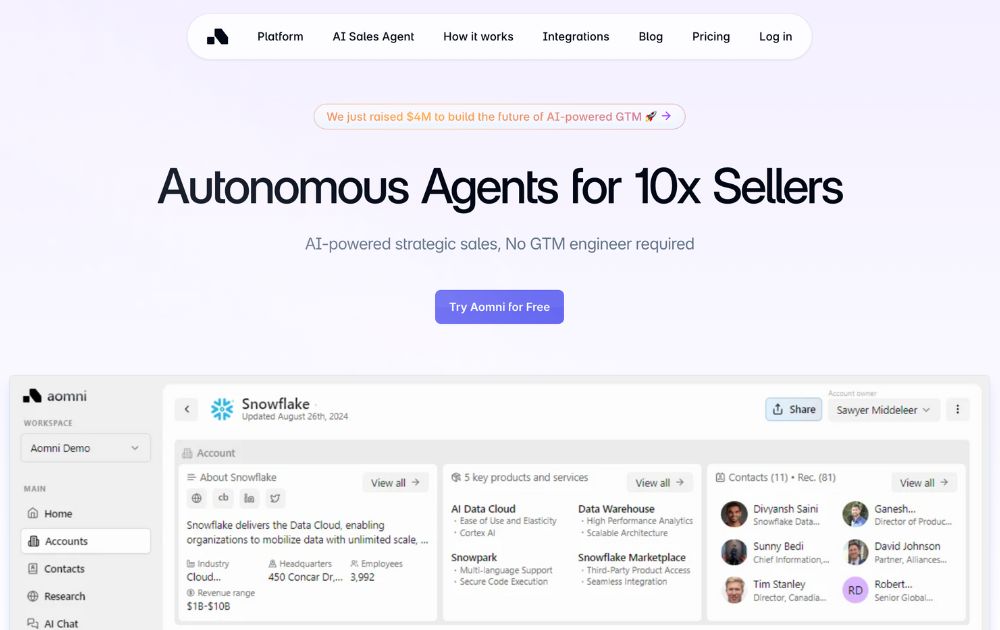
Packed with powerful AI-driven features, Aomni Agent is a tool that can help you grow your company’s outbound pipeline by conducting research to give you new Ideal Customer Profiles (ICPs). With it, you no longer have to create account plans for each of your prospects, as the AI tool will do it for you.
Aomni Agent engages with your customers, provides support, automates routine tasks, and gives you real-time insights and analytics, among many other features. To know its pricing and additional information, you need to contact them directly through their website.
2. Pictory
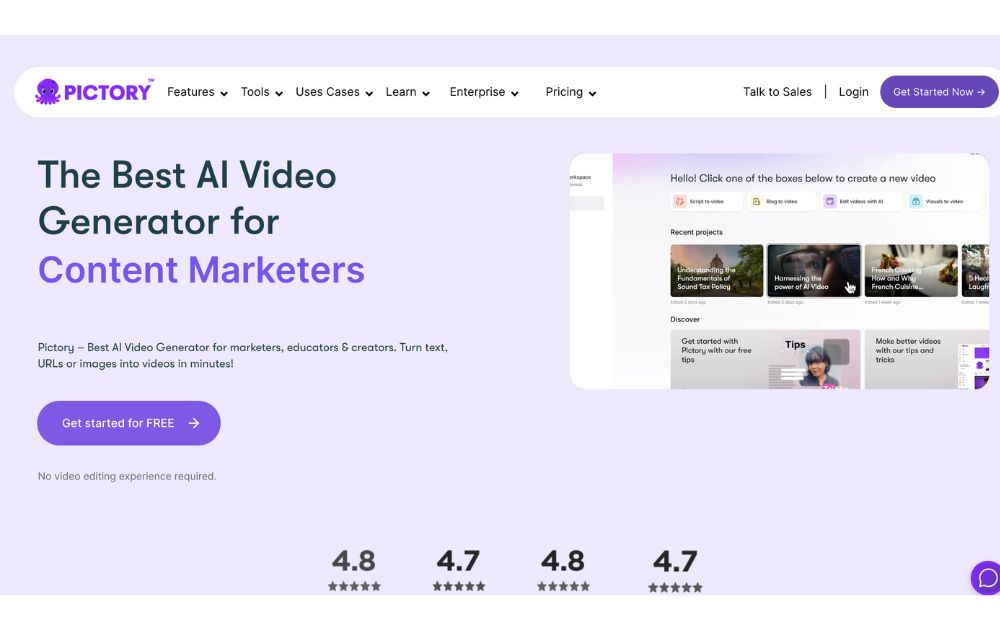
A video creation tool, Pictory, can help you create engaging and professional videos in minutes. It uses AI that automatically generates videos from your text, images, and audio. This means you get excellent results even without any video editing skills.
You can use Pictory to generate videos from your blog posts, articles, and other text. It can also edit existing videos and add images, music, or text. It offers a free trial and three plans with subscription fees that range from $23 to $119 per month.
3. Zeda.io
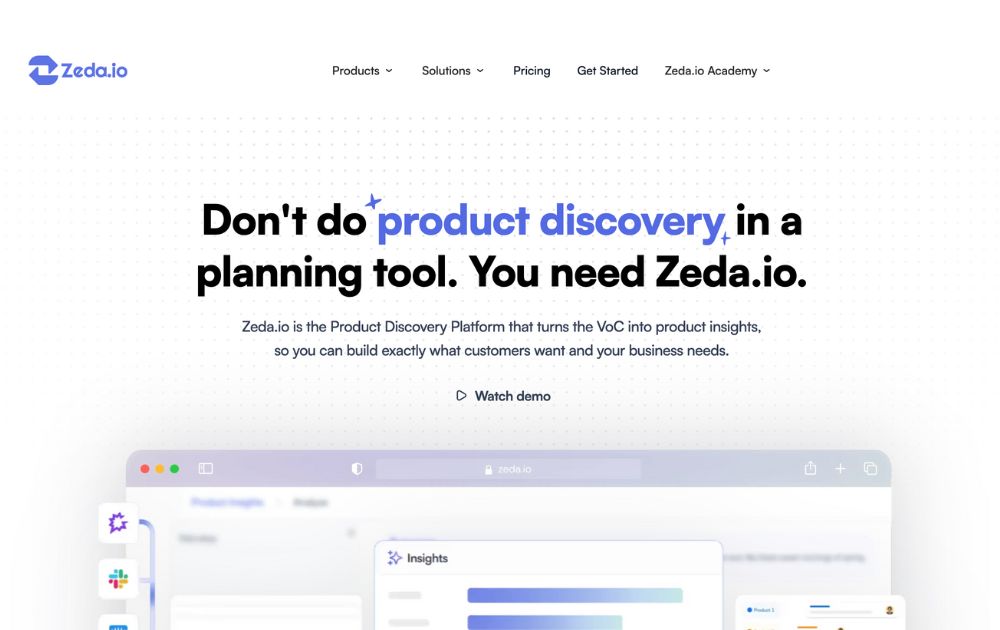
Zeda.io has grown into a powerful AI-powered product operating system. With its 2.0 update, the platform now connects customer feedback, product strategy, roadmapping, and internal documentation into a single intelligent workspace.
Its AI engine analyzes thousands of customer inputs, from surveys to reviews to support tickets, to identify patterns, prioritize features, and suggest product improvements. What used to take days of manual synthesis now takes minutes. The updated version also includes AI-generated product briefs, automated roadmap updates, and integrations with popular tools like Slack, Notion, and HubSpot.
4. Slite Ask
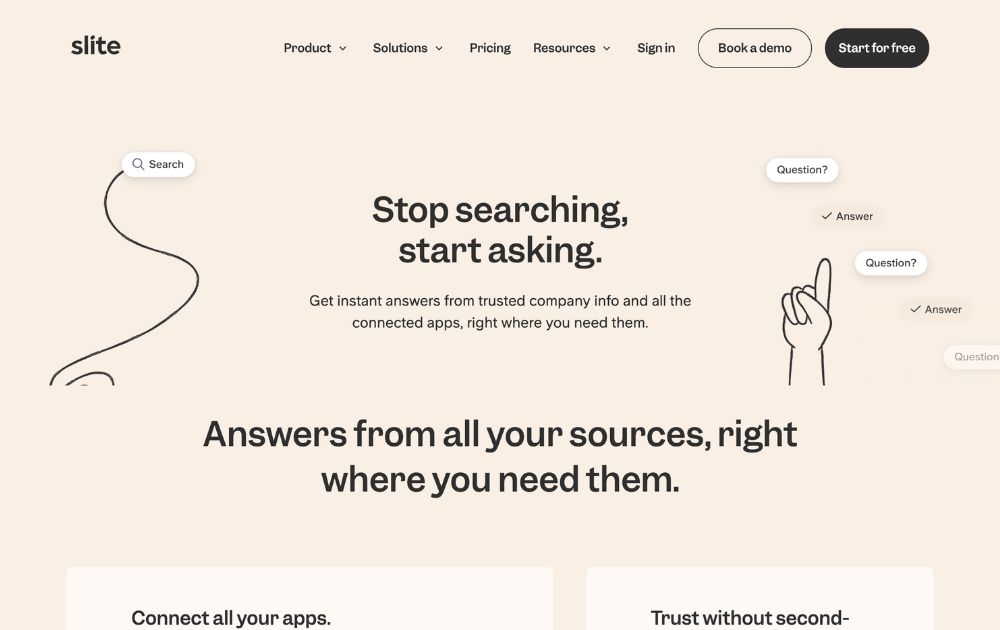
Slite Ask is one of the most reliable AI knowledge-base assistants for teams. Instead of manually searching docs or old messages, entrepreneurs can simply “ask” a question and get an instant answer based on their workspace knowledge.
The AI scans company documents, policies, SOPs, and internal notes to deliver accurate responses without hallucinations. This makes onboarding smoother and speeds up decision-making, especially for remote or hybrid teams.
5. Credal.ai
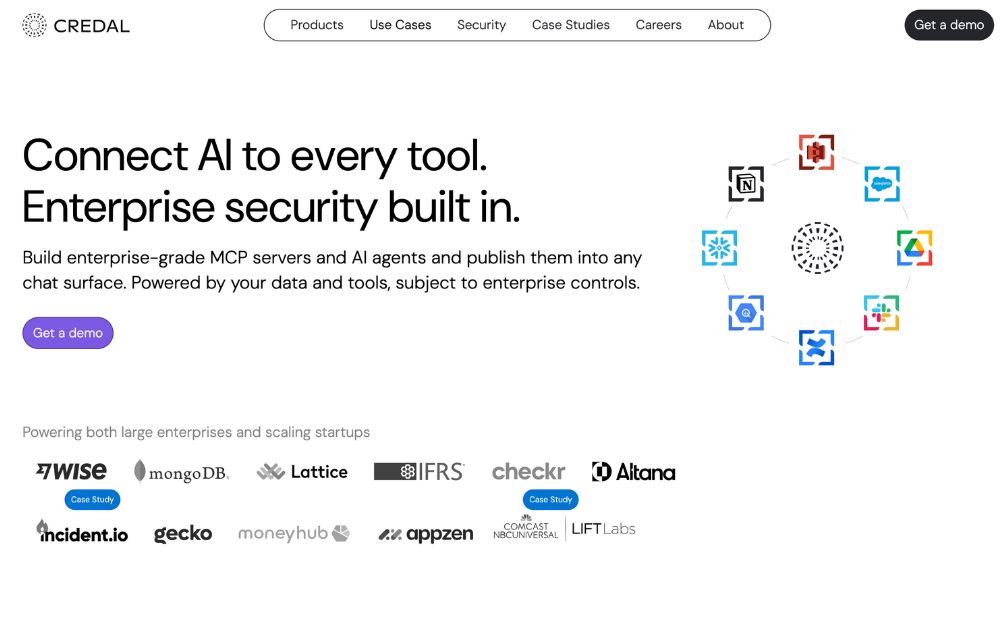
Keep your data safe with an AI tool that’s perfect for entrepreneurs. Credal.ai is a software that provides a secure environment for AI applications to run and monitors them for any potential security threats. This helps you protect your business’s sensitive data from unauthorized users.
Credal.ai protects your data from leaks, malicious codes, and unauthorized access. It has a free plan but with limitations, so to get the most out of this AI tool, a Team or Enterprise plan is recommended. Pricing starts at $500 per month.
6. Webscraping.AI
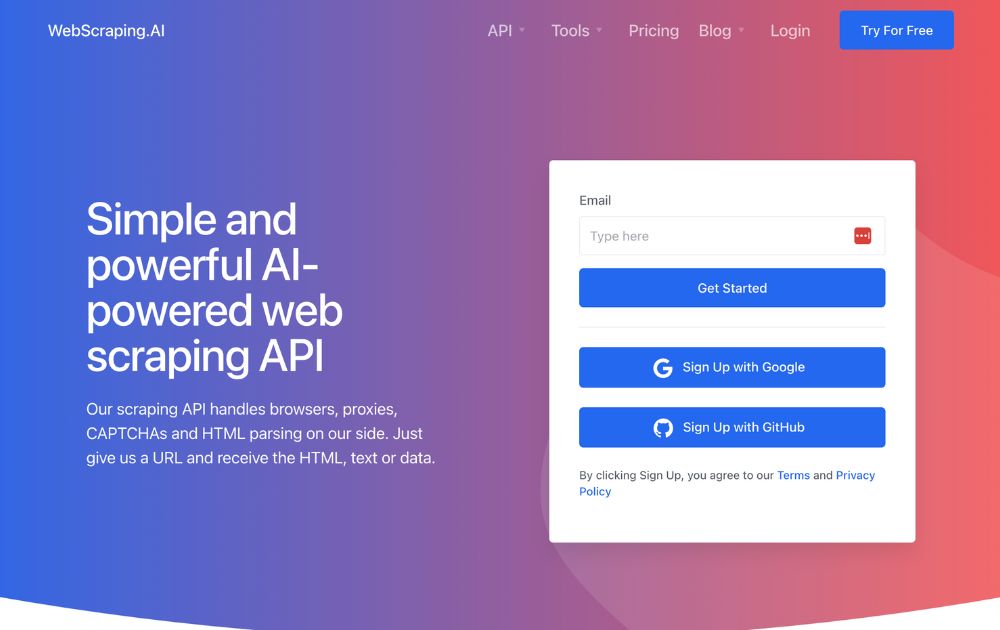
Web scraping is the process of extracting data from a website, such as stock prices, product details, company contacts, and many more. If you want access to this information, you’ll need Webscraping.AI. It is easy to use and won’t require you to have any coding or technical skills. All you need to do is enter the website you want to scrape, and the tool will automatically get the data from the website.
Webscraping.AI can help business owners make better decisions by providing accurate data to identify new opportunities. It can also help them make better decisions for their strategies. Pricing for this AI tool for entrepreneurs ranges from $29 to $249 per month, with no hidden fees.
7. ValueProp.dev
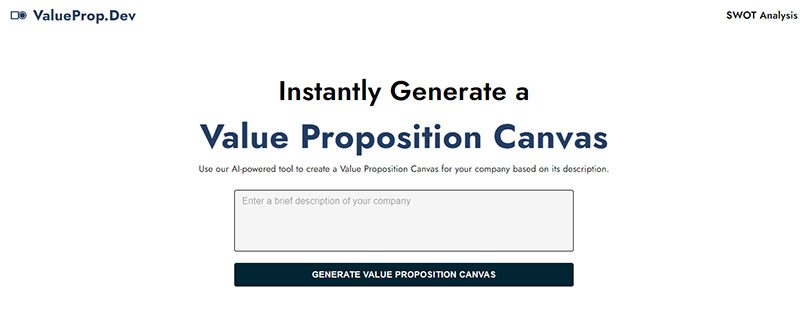
A value proposition is a statement that tells your customers what your product or service is all about. This can be tricky, but worry no more, as ValueProp.dev is an AI tool for entrepreneurs created explicitly for this. It uses machine learning to analyze your customer data to generate unique value propositions for you.
ValueProp.dev can help you improve your business by generating value propositions that significantly increase customer acquisition, retention, and sales. It is free for up to three value propositions, but they also have premium plans for more options and features. Pricing starts at $29 per month.
8. Lovo.ai

A text-to-speech and text-to-video platform, Lovo.ai can help you create engaging and informative content for your content marketing strategies. It uses AI to generate realistic and human-loke voiceovers, videos, avatars, and others. You can extend your reach globally as this tool can do voiceovers and videos in more than 140 languages.
Lovo.ai can help you increase your engagement, improve your SEO rankings, and boost conversions. You can try their free plan to give you an idea of what the tool can do for you. But for more features, a paid plan that starts at $19 per month can provide more value.
9. Zigpoll
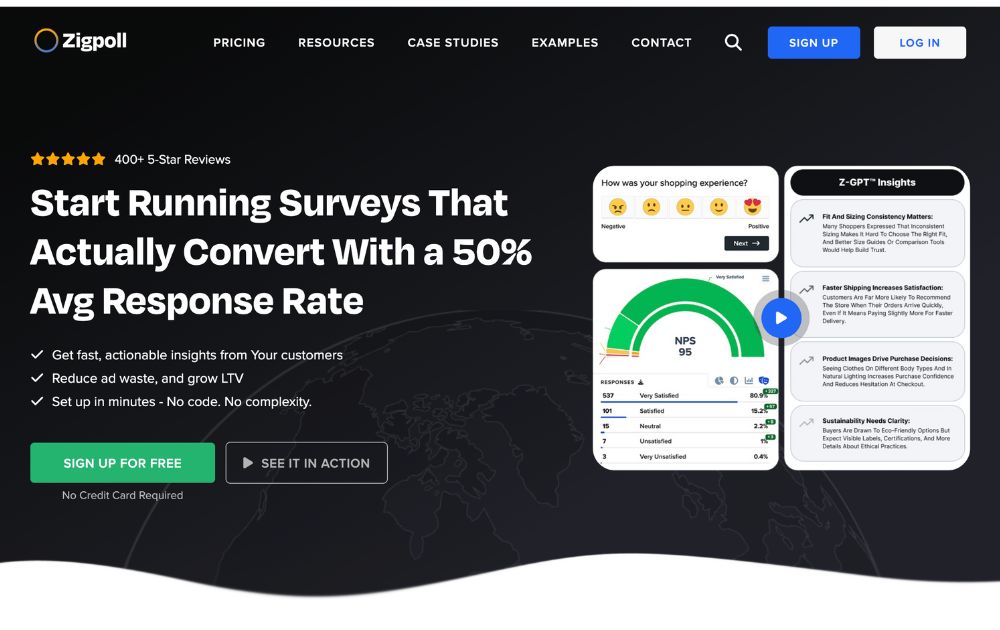
Zigpoll remains a solid choice for collecting customer insights, but its capabilities have expanded over the past two years. Today, Zigpoll uses AI to generate survey questions, summarize responses, detect sentiment, and even segment customers automatically.
Entrepreneurs can embed polls on websites, email campaigns, or post-purchase pages, then let Zigpoll’s AI categorize feedback into actionable insights. This helps brands quickly spot trends, product issues, or opportunities for upselling.
10. Pitches.ai

Are you looking to increase your business funding? Then creating the perfect pitch deck should be your priority. You can easily and quickly do this with Pitches.ai. It is an AI-powered tool for entrepreneurs to develop and refine pitch decks.
Pitches.ai analyzes pitch decks and gives you feedback on their structure, persuasiveness, and clarity. This gives you a higher probability of success. It offers four premium plans with prices ranging between $95 to $1,195.
Conclusion
Artificial intelligence is slowly becoming popular among business owners. Thanks to their many advantages, it’s no surprise that many will be using the technology from now on. These AI tools for entrepreneurs are a great example, and you should check them out today.
Featured Image Credit: Photo by Anna Shvets from Pexels
Business
What’s the Best Graphic Design Service for Education & eLearning?
Published
6 days agoon
November 13, 2025
TLDR: Best unlimited graphic design services for education and eLearning: ideal for quick turnaround, high-quality designs, and affordable pricing.
84% of communication is visual. Thus, for a world of education and eLearning, graphic design is imperative in the creation of projects for students and complex concepts. From interactive course materials to compelling marketing, strong visuals drive success. But finding a reliable, affordable design partner is tough.
Thus, it’s hard to come by a reputable service that can provide all your needs at a reasonable cost when it comes to project designs, turnaround expectations, anticipated quality and budgetary allowances.
But never fear! We’ve vetted what’s best for you!
1. Penji
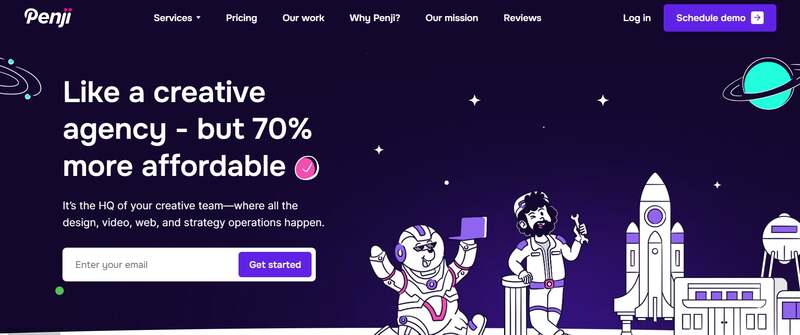
If you’re looking for the best for education and eLearning purposes, Penji has the best overall value as quality, turnaround time and offers have placed it at a reasonable flat fee monthly.
Penji is an unlimited graphic design service that works as you would expect – unlimited – which means that for a flat fee monthly, you’ll have access to your very own team of designers.
Features:
- A Well-Qualified Team of Designers: Whether you need e-learning interactive designs to course visuals (infographics, presentations) Penji’s graphic designers make everything visually appealing to an academic audience.
- Turnaround: Average turnaround is about 24-48 hours so you can keep churning out material for course creation or marketing.
- Unlimited Revisions: As many times as needed to get your requested project right.
- Accessibility and Submission Portal: Penji comes with a site that’s fairly user-friendly for ease of access in submissions, critiques and conversations.
2. Kimp

If you need an unlimited source and don’t mind one that’s second best, Kimp boasts graphics and even video. Consider this option with caution – some reviews do mention turnover can vary and this wouldn’t be the best reliable option if you’re on a time crunch for every project.
Features:
- Wide Range of Services: Kimp provides both graphic design and video services, offering a versatile creative solution.
- Dedicated Designers: You’ll work with a group as your designated team so you get to know your specific creators.
- Easier Feedback Opportunities: Feedback can be given on the Kimp site for creations with visual access as to what you want changed.
3. Design Pickle

Design Pickle was one of the first unlimited graphic design services to go for an unlimited design game. This is helpful if you need custom illustrations or a presentation created for a polished look in any educated (or business) endeavor – higher tier subscriptions go with probability – but in all other worlds, it has more value than other sites when stacked against one another.
- Unlimited revisions to get the exact illustrations or graphics needed for presentations or other projects.
- Quick turnaround times to keep on schedule with 48 hour returns.
- Global Design Team: Boasts a diverse team of professional designers, offering expertise across multiple industries to match various client needs.
4. ManyPixels

ManyPixels is another reputable source that has unlimited graphic designs services but assignment transparency which means you’ll have one assigned designer to you, but they’re a bit more transparent with regards to who may (or not) be able to help you but will get back to you with good timing.
- One Dedicated Designer: ManyPixels is a company that does not have unlimited designs, however you’ll have one assigned who will know your needs better than most.
- Good Turnaround Time: Generally they’ll turn around assignments within 1-2 days after submission regardless of simplicity/complexity.
- Reliable Designs: Good for marketing or simple visuals/templates you’d want to use for educational continuity but they may not give as specialized feedback as you’d think.
Cover Image Credit: Photo by Fox on Pexels

The CHIPS Act: What It Means for the Semiconductor Industry

Meet the Speakers of Digital Cut 2026: Seth Godin, Ali Abdaal & Neil Patel

What’s the Best Graphic Design Service for Beauty & Wellness Brands

10 Best AI Tools for Entrepreneurs

Our Top 10 Video Editing Tools for Smarter Content Production

What’s the Best Graphic Design Service for Education & eLearning?

What are the Best Graphic Design Services for Fashion Brands?

Our Top 10 Video Editing Tools for Smarter Content Production

How TikTok and Instagram Track You Using In-App Browsers

Top 10 Free and Paid Employee Communication Tools

The CHIPS Act: What It Means for the Semiconductor Industry

10 Best AI Tools for Entrepreneurs

10 Best Photo Editing Apps for Personal and Business Use in 2026


